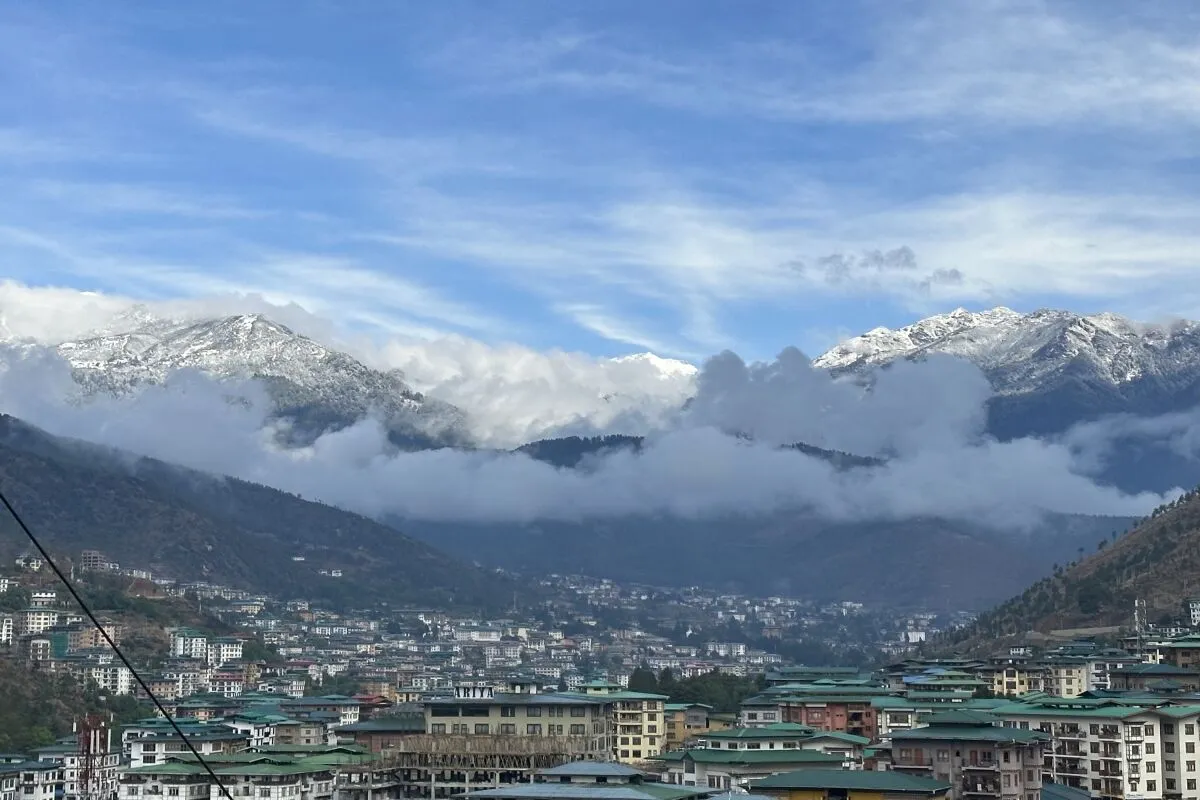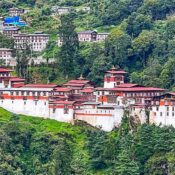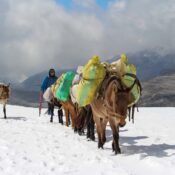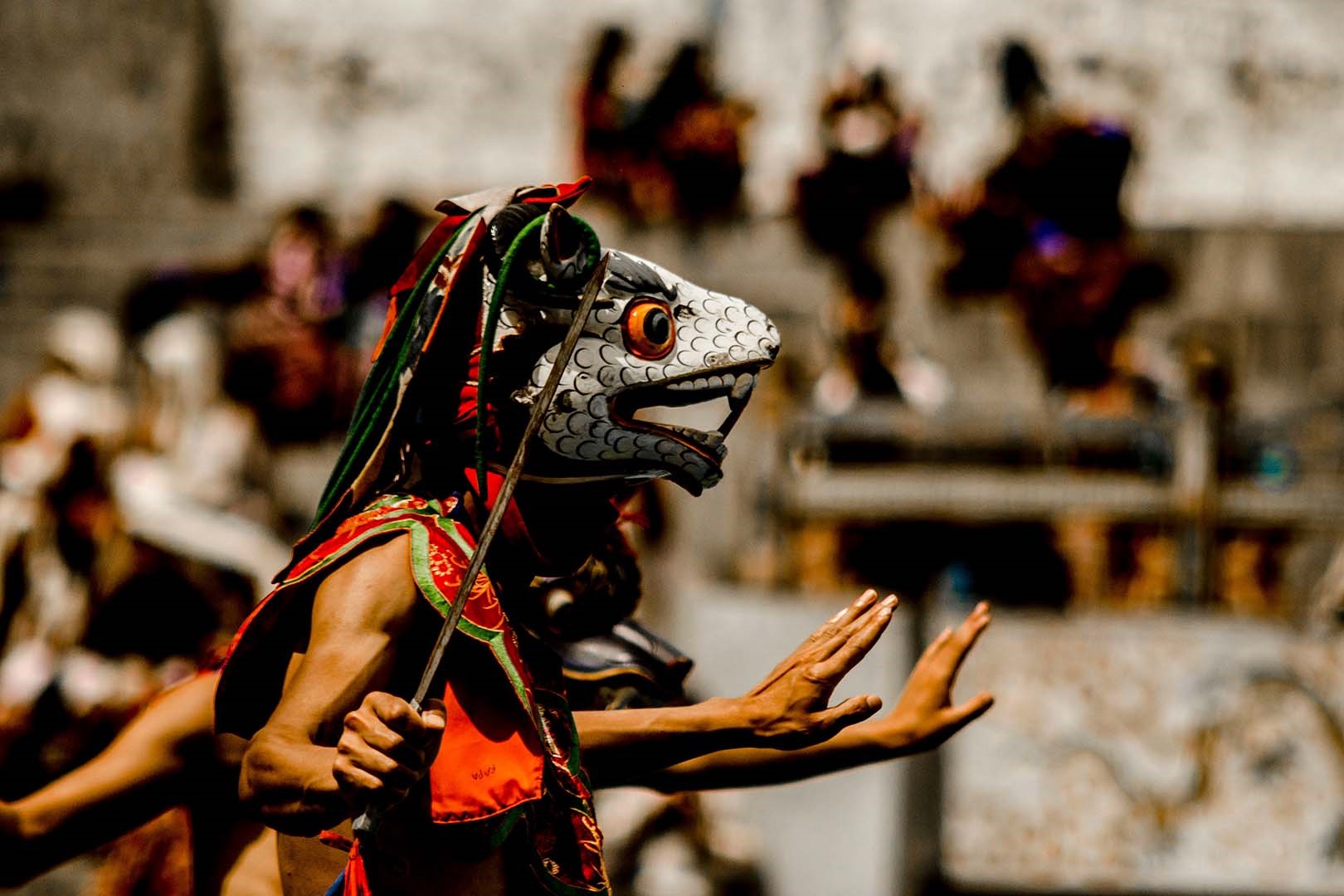Bhutan Weather in February

Bhutan Weather in February
Bhutan Weather and Temperature in February. In February, Bhutan experiences cold temperatures and winter conditions. Here is an overview of the weather in Thimphu, Paro, Punakha, Phobjikha, Haa, and Trongsa. The best season to travel to Bhutan.

Thimphu Weather and Temperature in February
- Thimphu experiences cold weather in winter with average daytime temperatures ranging from 8°C to 15°C (46°F to 59°F) in February.
- Nights can be chilly, with temperatures dropping to around 0°C to 5°C (32°F to 41°F).
- Expect occasional snowfall or sleet, especially in higher-altitude areas.
- In Thimphu, the capital city of Bhutan, February experiences very little rainfall.
- The average precipitation for the month is around 7 mm.
- Thimphu, the capital city of Bhutan, experiences an average of around 7 hours of sunshine per day in February.

Paro Weather and Temperature in February
- Paro has similar weather conditions to Thimphu since they are located nearby.
- Average daytime temperatures range from 8°C to 15°C (46°F to 59°F) in February.
- Nights can be colder, with temperatures ranging from 0°C to 5°C (32°F to 41°F).
- Occasional snowfall or sleet is possible.
- On average, Paro receives around 10 mm of rainfall during this month.
- Paro enjoys around 8 hours of sunshine per day.

Punakha Weather and Temperature in February
- Punakha is relatively warmer compared to Thimphu and Paro due to its lower altitude.
- In February, average daytime temperatures range from 15°C to 22°C (59°F to 72°F).
- Nights are milder, with temperatures ranging from 10°C to 15°C (50°F to 59°F).
- Precipitation is lower, but occasional rain showers or drizzles can occur.
- Punakha receives around 8 hours of sunshine per day.

Phobjikha Weather and Temperature in February
- Phobjikha is located at a higher altitude, and temperatures can be colder compared to lower-altitude regions.
- In February, average daytime temperatures range from 5°C to 12°C (41°F to 54°F).
- Nights can be chilly, with temperatures dropping to around -5°C to 0°C (23°F to 32°F).
- Snowfall is possible, and the region can have a frosty and wintry atmosphere.
- Phobjikha receives around 20 mm of rainfall on average.
- Phobjikha receives around 7 to 8 hours of sunshine per day.
Haa Weather and Temperature in February
- Haa is located at a higher altitude, and similar to Phobjikha, it experiences colder temperatures in February.
- Average daytime temperatures range from 5°C to 12°C (41°F to 54°F).
- Nights are colder, with temperatures dropping to around -5°C to 0°C (23°F to 32°F).
- Snowfall is possible, and the region can have wintry conditions.
- The average rainfall in Haa is around 6 mm during this time.
- Haa receives around 8 hours of sunshine per day on average.
Trongsa Weather and Temperature in February
- Trongsa is situated at a higher altitude, and temperatures can be colder compared to lower-altitude regions.
- In February, average daytime temperatures range from 8°C to 15°C (46°F to 59°F).
- Nights are colder, with temperatures ranging from 0°C to 5°C (32°F to 41°F).
- Occasional snowfall or sleet is possible.
- The average precipitation in Trongsa is around 10 mm during this month.
- In February, Trongsa receives around 7 to 8 hours of sunshine per day on average.
What to wear in Bhutan in February?
Layered Clothing: Layering is key to adapting to changing temperatures throughout the day. Here’s how you can layer your clothing:
- Base Layer: Start with thermal or woollen undergarments to provide insulation.
- Mid Layer: Wear sweaters, fleece jackets, or thermal tops for additional warmth.
- Outer Layer: A thick, insulated jacket or coat is essential to protect against the cold.
Tops: Pack long-sleeved shirts or t-shirts made of warm fabrics like wool or thermal materials. You can layer them with sweaters or cardigans for added warmth.
Bottoms: Opt for warm trousers, jeans, or thick leggings to keep your legs protected from the cold. You can also wear thermal bottoms for extra insulation.
Warm Accessories:
- Hat or Beanie: Wear a hat or beanie to keep your head warm and prevent heat loss from your body.
- Scarf: A scarf or neck gaiter can provide extra warmth for your neck and face.
- Gloves: Pack a pair of insulated gloves to keep your hands warm.
- Thick Socks: Wear thick socks made of wool or thermal materials to keep your feet warm.
Footwear: Wear sturdy, closed-toe shoes or boots that provide insulation and traction. Choose footwear that is waterproof or water-resistant, especially if you expect snow or rainfall.
Additional Considerations:
- Sunglasses: Protect your eyes from glare and sun reflection on snow-covered surfaces.
- Sunscreen: Even in cold weather, the sun’s UV rays can still be strong, so apply sunscreen to exposed areas of your skin.
- Moisturizer and Lip Balm: The cold weather can be drying, so moisturize your skin and lips to prevent dryness and chapping.
Bhutan Weather Monthwise
Bhutan Weather and Temperature in January




